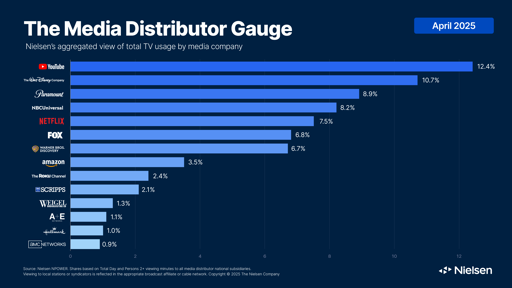Front Brake Lights Could Drastically Diminish Road Accident Rates
-
It's doesn't matter, since the absence or presence of light would still be perceived by colour blind people. It doesn't change how they would drive, as they are already driving with the knowledge of colour blindness in mind when looking at tail lights.
Tail lights being red is fine if you live with the most common forms of colorblindness which fall into what we call “red-green colorblind.” It is still a different color than headlights.
Now put those same red-green lights on the front, and we have a problem.
They could use traffic light green. There's not any problems identifying those even in places with the lights mounted horizontally. There's enough difference in saturation you can tell the difference even with colorblindness.
-
Here's an idea. How about we zap the drivers after they make a turn if they didn't use a turn signal beforehand?

Cars with lane-keep assist with vibrate the steering wheel and beep at you. It's at least something but I think most people turn it off if it gets annoying
-
It's doesn't matter, since the absence or presence of light would still be perceived by colour blind people. It doesn't change how they would drive, as they are already driving with the knowledge of colour blindness in mind when looking at tail lights.
A lot of colorblind people can tell the difference between red-green and white.
They just percieve red-green as the same.
So they lose the visual cue for front-back under the proposed change.
-
The key detail is that, like with rear brake lights, they extinguish when the foot is removed from the brake pedal. So it's not so much the presence of the brake light, but the presence of an inactive brake light that would, serve as a warning that a car is about to start moving. This would be very helpful to drivers on a road when other drivers are pulling out too early from a side road or driveway. That little bit of extra warning is, in many situations, enough for you to pump the brakes, hit the horn, or both.
If anything I think they would have to use a green light that turns on when accelerating/not braking. It would be way more dangerous in the future when people are trained with "No green = braking" but older cars don't have the light at all.
It's important to consider how a transition like this would even work. I personally think this is a little too drastic of a change, and is incompatible with existing vehicles and habits. -
Cars with lane-keep assist with vibrate the steering wheel and beep at you. It's at least something but I think most people turn it off if it gets annoying
Anyone complaining about lane keep not letting them change lanes or make turns is telling on themselves
-
I don't think they illuminate the brake lights, hence my comment. Technology connections has talked about this, although IDK which video it was.
I was curious if anyone had actually tested it or not, and I found the video above where they get right into it, without any intros or family history or begging to like & subscribe... just a short video where they test it and find that, YES!, the brake lights do come on when you use the steering wheel paddle brake or when you're in L gear and take your foot off the accelerator.
-
This is actually insane. Their brakes must wear out so fast.
The brakes aren’t engaged? The light turns on before there’s pressure on the brake. They probably don’t even know their lights are on since they aren’t decelerating.
-
They tested using a green light for the front brake light, not a red one
Flashing blue would be neat.
-
Again, if you're too stupid to make sure the multiton hunk of metal is coming to a stop by all the other obvious visual markers, including watching it's speed compared to stationary objects like signs and lamp posts, then this won't do shit. People need more aweness of their surroundings, not a bunch of lights and horns because people won't pay attention.
You enter the road when it's safe, not jump in and play frogger with lights hoping to get across.
Yup, this is a moronic idea.
-
Japan introduced brake lights that increase intensity based on how hard the driver was braking. 20+ years ago. They tested it in the US and drivers found it to be “confusing.”
If Japan introduced that they never caught on, unless it's specific to an area or model of car.
-
It used to be mandatory with always on rear lights in Sweden (you couldn't even turn them off). But an adaptation to EU rules removed that requirement.

I strongly doubt it was genuinely linked to that. There are EU countries where having lights on all the time is mandatory.
-
It used to be mandatory with always on rear lights in Sweden (you couldn't even turn them off). But an adaptation to EU rules removed that requirement.

I strongly doubt it was genuinely linked to that. There are EU countries where having lights on all the time is mandatory.
-
I've actually always found it weird with all the automation vehicles have, that blinkers aren't linked to the wheel. it already automatically disengages when turning, it shouldn't be too hard to have it auto engage as well when turning
The thing is, you want the turn signal to turn on before the start of the turn, so other drivers, pedestrians, cyclists can react.
-
The thing is, you want the turn signal to turn on before the start of the turn, so other drivers, pedestrians, cyclists can react.
agreed, I don't think the blinker switch should be removed, but a late indicator is better than no indicator.
-
I have seen some cars flash their brake lights when ABS is activated, but this would be better
The EU has approved G-triggered brake lights that do just that, flash rapidly on hard braking. I’ve only seen it on higher end cars so far, but they absolutely exist. Unfortunately in the US people stick brake flashers that blink in patterns every time they touch the brake. Mostly useless as they’re installed to be “look at me, aren’t I cool with my blinky brake lights?” rather than any additional safety.
-
Yeah, the only thing I could think of is that I'm driving down a country road, and I see the front brake light ahead of me because someone stopped for a deer in the road or something.
in front of this vehicle" is going to get people killed.And the negative state of "the lack of this light means that the vehicle could be moving" is exactly what we have now.
Reading through the article, it seems like one scenario is that a vehicle stopped at an intersection might be about to pull out, endangering another vehicle about to cross? It seems like the thinking is, if you notice a front/side brake light stops being lit as you approach the intersection, it might indicate they're about to accelerate - be cautious!
I'm not fully convinced either, it seems like a lot of the benefit they're projecting is based on analysis of historical collisions, rather than any kind of experimental results. It sounds like the study is to justify expanding research to that sort of simulated experimentation, though - I'm curious what that kind of testing would find.
-
The hazards are to indicate you are stopped and now a hazard.
Only when you are stopped and now a hazard. Your car becomes a blinking light. We have road rules for blinking lights, so it SHOULD be saying one specific thing.
Thank you for coming to this road safety talk.
They also indicate slow moving road hazards like a semi carrying an oversized load
-
and honestly i have the same problem with that intended use. it often looks like a stopped car is attempting to turn out into traffic. IMO emergency lights should have a faster blink pattern or something to differentiate from turn signals.
Faster blink is already used to indicate that one of the lights is burned out. It's a consequence of the mechanical part that operates (used to operate) the blinking; less resistance caused by a burned out light means it blinks faster
-
I think what he wants is the front turn signal to wrap around the front, so I can see the left signal from the right quarter.
I'm not aware that this is not the case, but I don't know that I would have noticed if it was not.
I'm pretty sure most cars have a turn signal near the headlights, and one on the mirror or on the side for that use case, no?
-
I'm pretty sure most cars have a turn signal near the headlights, and one on the mirror or on the side for that use case, no?
Actually I think I remember watching a technology connections video about how card in the US can use the headlights as a turn signal, or something like that.
I don't think that's allowed in Europe or the EU or whatever.





